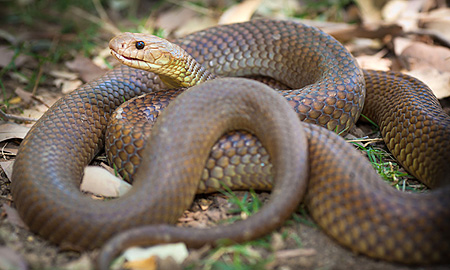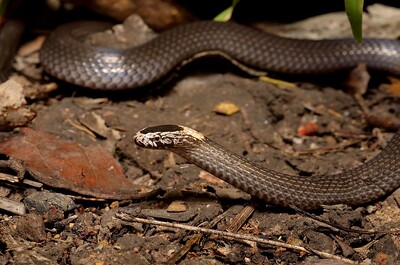Introduction
Australia is famous for its special wild animals, including a diverse selection of poisonous serpents. These creatures, while frequently feared, play essential duties in preserving eco-friendly equilibrium. Recognizing the preservation of Australia's venomous serpents and the function that education and awareness play can considerably boost our conjunction with these remarkable reptiles. This post discovers numerous aspects of serpent preservation, the importance of public education and learning, and useful first aid measures for serpent bites.
Conservation of Australia's Venomous Snakes: The Role of Education And Learning and Awareness
In Australia, serpents are an important part of the community, managing pest populaces and adding to biodiversity. Nonetheless, several varieties encounter dangers due to environment loss, climate change, and human activity. The conservation efforts targeted at securing these reptiles hinge significantly on education and learning and increasing awareness amongst the general public.
By educating people concerning snake habits, their eco-friendly relevance, and safe practices for cohabiting with them, we can decrease fear-driven actions that bring about unneeded killings or injuries. Educational initiatives help dispel myths surrounding snakes-- such as the usual inquiry: are tiger snakes venomous?-- and motivate regard for their duty in nature.
The Importance of Awareness Programs
Awareness programs are essential in changing public assumptions regarding serpents. Numerous people check out these reptiles as naturally harmful without understanding their eco-friendly roles. Public outreach efforts can consist of workshops, community occasions, school programs, and information Safety and Prevention campaigns created to educate individuals concerning:
- Identification of poisonous species: Understanding which snakes threaten aids people prevent encounters. Safe behaviors: Teaching individuals how to act around snakes can stop bites. First help knowledge: In instances where bites do take place, being educated about first aid for serpent attacks can conserve lives.
By increasing recognition with structured education efforts, we can cultivate a society that respects wild animals and focuses on conjunction rather than fear.
Types of Venomous Snakes Established In Australia
Australia is home to some of the world's most venomous serpents. Here's a brief review:
Tiger Serpent (Notechis scutatus)- Commonly located in coastal regions. Known for its powerful neurotoxic venom. Frequently seen near water bodies.
- Highly hostile with powerful venom. Responsible for more snakebite casualties than any kind of other species in Australia.
- Known for its ambush searching style. Has swift striking rate with extremely neurotoxic venom.
- One of Australia's biggest venomous snakes. Its attack can supply huge quantities of neurotoxin.
- Generally non-aggressive but still possesses dangerous venom. Found predominantly along the southwestern coast.
Understanding Their Habitats
Understanding tiger serpent environment is important for both preservation initiatives and public safety. Tiger serpents prosper in areas near to water resources such as swamps, lakes, and marshes yet they likewise occupy coastal regions. Safeguarding these habitats is important for guaranteeing the survival Camouflage in Australian snakes of not only tiger serpents yet likewise various other wildlife within these ecosystems.
Habitat Protection Initiatives
Various companies function towards habitat defense through campaigns such as:

- Establishing shielded areas Restoring deteriorated habitats Promoting sustainable land use practices
These measures not only benefit tiger serpents but contribute to total biodiversity conservation.

The Duty of Research study in Conservation Efforts
Research plays an essential function in recognizing serpent populaces and their health and wellness status. Recurring studies right into the ecology and actions of Australian snakes notify preservation methods by offering data on population numbers, breeding patterns, and risks dealt with by different species.
Key Research study Areas Include:
- Venom analysis Population dynamics Habitat preferences
This research study can lead reliable monitoring plans to shield prone species while promoting conjunction with humans.
First Help for Snake Bites: Necessary Knowledge
One important facet that intertwines with education and learning is understanding what to do in instance one suffers from a snake attack-- a scenario that demands immediate reaction skills.
What Every First Aid Set Need To Contain
An appropriate serpent bite first aid kit should include:
- Compression bandages Sterile gauze pads Antiseptic wipes A splint or immobilization device Emergency contact numbers
Step-by-Step Emergency treatment Treatment for Snake Bite
Remain calmness; attempt to limit activity as it might spread venom quickly. Apply a compression plaster over the bite website without removing circulation. Keep the bitten arm or leg incapacitated at or below heart level. Seek emergency medical aid immediately.Why Education and learning on First Aid Is Crucial
Educating communities regarding first aid procedures ensures prompt responses throughout emergency situations which can considerably minimize morbidity related to serpent attacks throughout Australia.
Frequently Asked Inquiries (Frequently asked questions)
1. Are tiger serpents venomous?
Yes! Tiger serpents are extremely venomous with neurotoxic impacts that make prompt medical therapy necessary after a bite.
2. What must I do if bitten by a baby tiger snake?
Follow criterion emergency treatment treatments right away-- keep one's cool, immobilize the limb, use stress over the bite site making use of a plaster or fabric without restricting blood flow-- and look for clinical aid without delay.
3. How common are serpent bites in Australia?
While stats differ year-to-year as a result of variables like weather conditions influencing snake activities; typical reports recommend around 300 situations annually with casualties being fairly uncommon as a result of enhanced medical responses.
4. Can I treat a snake bite at home?
No! Home therapies such as using ice or sucking out venom are ineffective; specialist clinical focus is required after any kind of suspected bite incident.
5. What's special about eastern brown snakes?
They're understood for their aggressive nature incorporated with powerful poison; they represent a lot of fatal bites in Australia due greatly to their proximity to populated areas!

6. What are some common signs complying with a serpent bite?
Symptoms might include swelling around the bite area, pain at or near the website; systemic symptoms could entail queasiness or difficulty taking a breath depending on toxic substance kind absorbed into bloodstream!
Conclusion
Conservation efforts bordering Australian venemous snakes rest on effective instructional strategies that empower communities while promoting respect towards these often-misunderstood animals! By the most venomous snake in australia boosting recognition concerning their eco-friendly value alongside appropriate security protocols-- including emergency treatment expertise-- we lead roads towards lasting coexistence benefiting both human beings & & wildlife alike!
In essence-- the conversation bordering conservation has to proceed thriving via aggressive engagement marrying clinical study alongside community participation making sure meaningful influence today & & tomorrow!